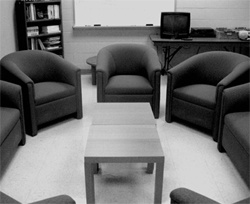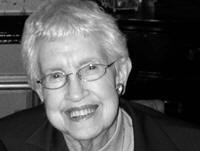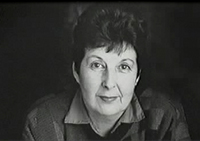|
home
about
awards
careers
contact
courses
debate
degrees
department
graduates
facilitators
lab
news
testimonials
|
|

An Overview: The Communication Lab
(COMMLAB) is a required part of Communication 1103:
Interpersonal Communication, Communication 1105:
Public Communication, and Communication 2175:
Issues in Media Studies. The purpose of
the experiential learning lab is to reinforce what the
students are learning in class and to help them reach their cognitive, affective and behavioural goals. Through small group discussion, role-playing, and video-taped
activities, the lab complements the class, but is a unique experience for the students.
Students have stated that attending the lab is a
major contributor to their success in the class. The lab is designed to be a comfortable,
relaxing environment that is conducive to discussion and participation.
For
more detailed information about the lab, please refer to the
Communication
Lab Component.
 A Brief
History: The Communication Lab was started by Dr. Mary
A. Lynch in 1965, making CBU's Lab the longest running of its kind in North America.
It started off, modestly enough, in a cleared out "broom closet" at "Little
X." Dr. Lynch's students wanted a place where they could practice their speeches
without her being present. Over the next 40+ years, we have seen much growth and
development surrounding the experiential learning lab. In 1967, Mary moved her students
from this "broom closet" and began to operate a Speech Communication Lab on the
second floor of MacLeod House on the Xavier College Campus. In 1972, the lab was moved
into larger quarters at the corner of George and Ferry Streets. This was the first year
that Mary used student helpers (known today as
Communication Lab Peer Facilitators). When we moved to the
current University campus in 1979, Mary was extremely proud to have a new, state
of the art space designed to meet the needs of her Speech Communication students. In
September 2001, the lab once again moved and it was unveiled as the "Dr. Mary A.
Lynch Communication Lab" in homage to its founder. A Brief
History: The Communication Lab was started by Dr. Mary
A. Lynch in 1965, making CBU's Lab the longest running of its kind in North America.
It started off, modestly enough, in a cleared out "broom closet" at "Little
X." Dr. Lynch's students wanted a place where they could practice their speeches
without her being present. Over the next 40+ years, we have seen much growth and
development surrounding the experiential learning lab. In 1967, Mary moved her students
from this "broom closet" and began to operate a Speech Communication Lab on the
second floor of MacLeod House on the Xavier College Campus. In 1972, the lab was moved
into larger quarters at the corner of George and Ferry Streets. This was the first year
that Mary used student helpers (known today as
Communication Lab Peer Facilitators). When we moved to the
current University campus in 1979, Mary was extremely proud to have a new, state
of the art space designed to meet the needs of her Speech Communication students. In
September 2001, the lab once again moved and it was unveiled as the "Dr. Mary A.
Lynch Communication Lab" in homage to its founder.
 In
2011, the Communication Department created a new award to honour a
Communication Lab Peer Facilitator in memory of Pearl
Peers.
Pearl Peers
was the first Communication Lab Coordinator during the pivotal years of 1979
to 1993. The growth and development of the Communication Department at that
time required an individual to organize the labs and coordinate the
increasing number of Peer Facilitators. She made a significant contribution
to the Communication Department by supervising the first group of
Communication Lab Peer Facilitators and shaping the lab model into much same
the way it runs today. Pearl’s dedication to the Communication Lab will be
forever recognized with this award. In
2011, the Communication Department created a new award to honour a
Communication Lab Peer Facilitator in memory of Pearl
Peers.
Pearl Peers
was the first Communication Lab Coordinator during the pivotal years of 1979
to 1993. The growth and development of the Communication Department at that
time required an individual to organize the labs and coordinate the
increasing number of Peer Facilitators. She made a significant contribution
to the Communication Department by supervising the first group of
Communication Lab Peer Facilitators and shaping the lab model into much same
the way it runs today. Pearl’s dedication to the Communication Lab will be
forever recognized with this award. 
|


 A Brief
History: The Communication Lab was started by
A Brief
History: The Communication Lab was started by  In
2011, the Communication Department created a new award to honour a
Communication Lab Peer Facilitator in memory of
In
2011, the Communication Department created a new award to honour a
Communication Lab Peer Facilitator in memory of